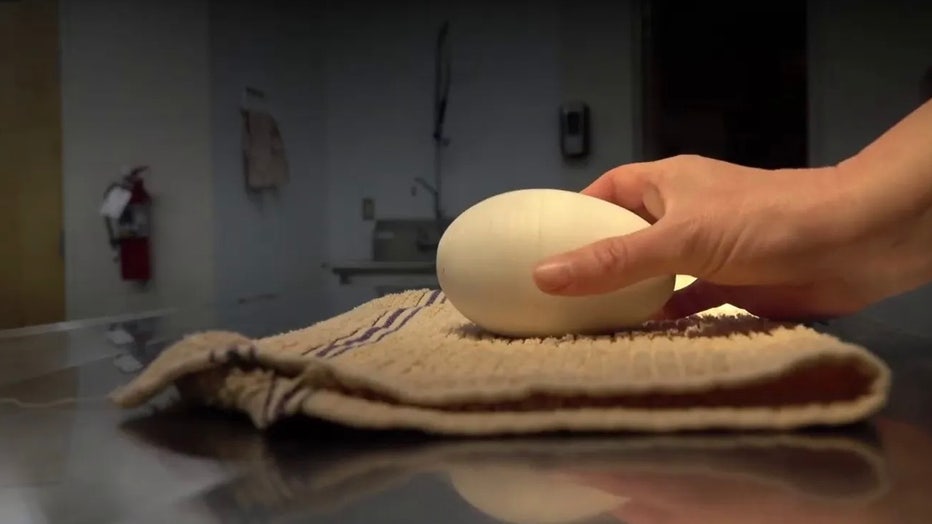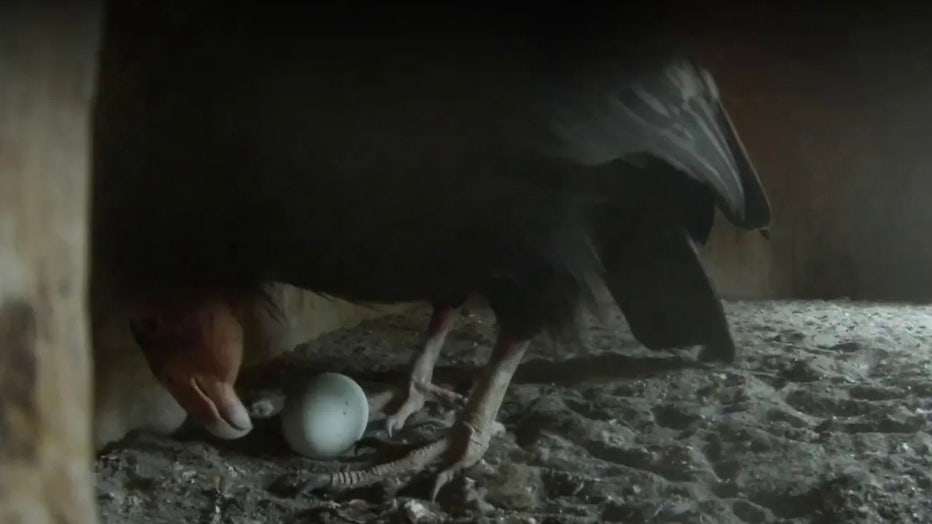Oregon Zoo's high-tech 'smart egg' could help save endangered California condor

A rare and critically endangered California condor. (Photo by David McNew/Getty Images)
PORTLAND, Ore. - Dummy egg technology at the Oregon Zoo is showing off its smart success at saving the critically endangered California condor.
The electronic replica condor egg was created by a 3D printer. It records sound, temperature, movement and other data critical to saving the species – one of the original animals included in the 1973 Endangered Species Act.
"We’ve never been able to get this type of information from inside of a California condor nest before," said Kelli Walker, the zoo’s senior condor keeper. "Knowing the precise conditions for rearing healthy chicks could be very useful to condor recovery efforts."
The zoo said the condor chicks are then sent to release sites in the wild after they hatch at the Jonsson Center for Wildlife Conservation, the zoo's condor recovery center located in rural Clackamas County on metro-owned open land.

The Oregon Zoo said the electronic egg was created by a 3D printer at a Texas A&M University laboratory. The replica egg records sound, temperature, movement and other data critical to saving the endangered California condor. (Oregon Zoo)
In 1982, only 22 California condors remained in the wild, according to the zoo. Five years later, the last condors were brought into human care in an attempt to save them from extinction.
Since 2003, more than 115 chicks have hatched at the Jonsson Center. Recovery efforts, like the Oregon Zoo’s, has helped the world’s California condor population reach totals around 500 birds, the zoo said.
‘The birds seem completely fine with it’
Walker said she heard about the technology used with seabirds and parrots. She contacted a Texas A&M University laboratory to see if they could help her create a similar egg that would work for condors.
"I sent them dimensions of an actual condor egg, and they used a 3D printer to create two dummy eggs that were exactly the same size," Walker said. "We don’t want these eggs to be different from the real thing in any perceptible way, so we glued rocks to the inside shells to match the weight. They roll around really naturally and so far, the birds seem completely fine with it."
The condor team has been using their two dummy eggs since mid-February.

(Oregon Zoo)
The zoo said one egg is used in a nest box under a breeding pair, and the other has been placed in an incubator to record baseline temperatures.
When the egg is in a nest box, the zoo said the equipment hidden inside measures turn rate, temperature and how often the egg is moved. It can also record audio of condor parents’ breathing and heartbeats while they take turns sitting on the nest.
When placed in an incubator next to a real egg, it can play back those recorded sounds for the developing chicks., the zoo reports.
"We know unhatched chicks can hear their parents while they’re still inside the egg," Walker said. "Playing them sounds they’d be hearing inside the nest is one more way we can provide the best space possible for them to grow."
Walker and other members on the zoo's condor care staff say they are keeping optimistic in the valuable data they are collecting.
"This could be groundbreaking for California condor recovery efforts everywhere," she said. "And with only about 500 California condors in the world, any progress we can make is critically important."

